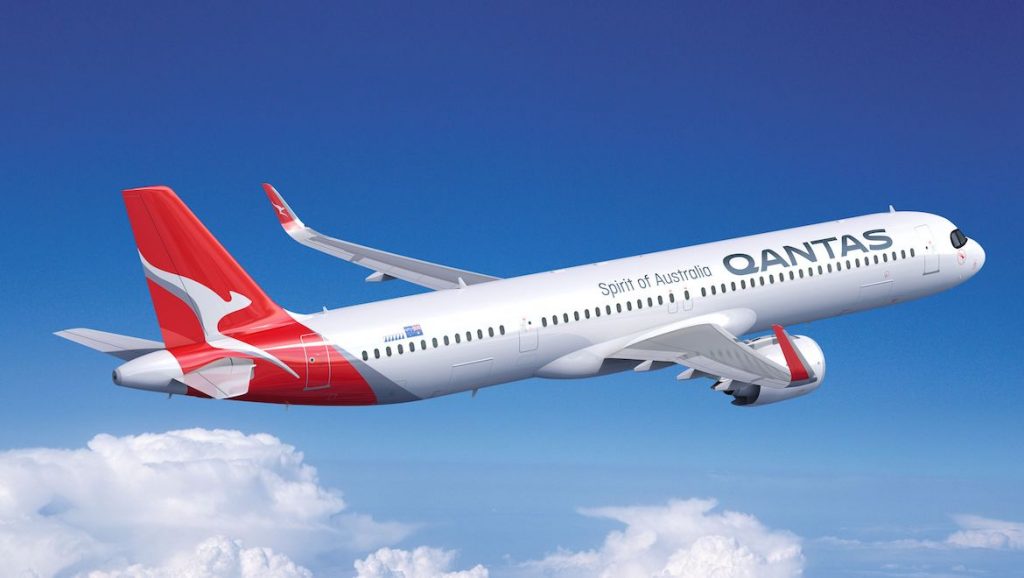
Australia’s Qantas is set to replace its ageing Boeing narrowbodies with Airbus’ A320neo and A220 families of aircraft, in a significant blow to the American planemaker.
The Australian flag carrier will initially place an order for 20 A321XLR (extra long-range) and 20 A220s but will have the option to purchase a further 94 over 10 years as its 737-800s and 717s are phased out.
The order is in addition to the low-cost carrier Jetstar’s existing agreement with Airbus for over 100 aircraft in the A320neo family, and the new deal means these orders can be combined. The business added it received a “material discount” from the list price.
Qantas Group CEO Alan Joyce said the airline was in a position to make these commitments because of the way it had navigated the COVID pandemic.
“Can I thank Airbus, Boeing, Embraer and the engine manufacturers for the efforts they put into this process,” said Joyce. “This was a very tough choice to make. Each option delivered on our core requirements around safety, capability and emissions reductions. But when you multiply even small benefits in areas like range or cost across this many aircraft and over the 20 years they’ll be in the fleet, Airbus was the right choice as preferred tenderer.
“The Airbus deal had the added advantage of providing ongoing flexibility within the order, meaning we can continue to choose between the entire A320neo and A220 families depending on our changing needs in the years ahead. The ability to combine the Jetstar and Qantas order for the A320 type was also a factor.
“The A320 will be new for Qantas Domestic, but we already know it’s a great aircraft because it’s been the backbone of Jetstar’s success for more than 15 years and more recently operating the resources industry in Western Australia.
“The A220 is such a versatile aircraft which has become popular with airline customers in the United States and Europe because it has the capability to fly regional routes as well as longer sectors between capital cities.
“The combination of small, medium and large jets and the different range and economics they each bring means we can have the right aircraft on the right route.
“For customers, that means having more departures throughout the day on a smaller aircraft, or extra capacity at peak times with a larger aircraft. Or the ability to start a new regional route because the economics of the aircraft make it possible.
“We have some exciting plans for the next-generation cabins we’ll put on these aircraft, which will offer improvements for passengers that we’ll share in coming months.
“Importantly, these aircraft will deliver a step change in reducing fuel burn and carbon emissions compared with our current fleet, which gets us closer to the net zero target we’ve set,” added Joyce.
Specifications
Today’s news marks the largest aircraft order in Australian aviation history and follows Qantas evaluating the A320neo and B737 MAX families as well as the smaller A220 and Embraer E190/195-E2s.
“The initial firm order concentrates on the larger, single-aisle A321XLR, and the mid-size A220-300 with purchase right options for the smaller A220-100, giving Qantas a fleet mix that can deliver better network choices and route economics,” said the business in a statement.
“The XLR can carry around 15 per cent more passengers on each flight than the airline’s existing B737-800s, making it well suited to busy routes between capital cities like Melbourne, Sydney and Brisbane. Its longer range means it can also be used to open up new city pairs.
“The small and medium size A220s provide the group with flexibility to deploy these aircraft throughout most of its domestic and regional operations. They could be used during off peak times between major cities and on key regional routes to increase frequency.
“Both aircraft types will be powered by Pratt & Whitney GTF™ engines and will deliver fuel savings of between 15-20 per cent, contributing to the airline’s broader emission reduction efforts.”
Airbus A320 family
- Includes the Airbus A320neo and A321neo
- A320neo seats – from 150 to 180 for a two-class configuration, 6,300km range
- A321neo seats – from 180 to 220 for a two-class configuration, 7,400km range
- A321XLR seats – from 180 to 220 for a two-class configuration, 8,700km range
- The A320neo family offers fuel improvements of 14 per cent from A320ceos
- 50 per cent quieter than the A320ceos
- Pratt & Whitney GTF™ (PW1100G-JM) engines
Airbus A220
- Specifically designed for the 100-150 seat market
- More than 20 per cent lower fuel burn per seat than B717s, half the noise footprint and decreased emissions
- Up to 6,390km range
- Pratt & Whitney GTF™ (PW1500G) engines










